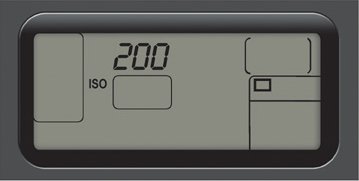Change Your ISO on the Fly
| A huge advantage of digital is that you can change the ISO anytime the scene dictates it. With traditional film, that was impossible. Well, it wasn't impossible, it was just incredibly expensive, because to change the ISO (film speed) you actually had to change film. So, for example, let's say you're shooting the outside of a church with a brand new roll of ISO 200 film (36 exposures), and you crank out four or five shots. You walk inside, and it's very dark, and they won't allow you to set up a tripod (which isn't unusual for a church). If you needed to switch to ISO 800 film, you'd need to pop out the 36-exposure roll (basically sacrificing 31 unexposed shots to the film gods), as you pop in a new roll of ISO 800. So you crank off 17 shots, and then you're back outside. Whoopsyou've got ISO 800 film in, and it's a sunshiny day. Time to switch film again (and sacrifice 19 more shots). See where this is going? But with digital, you can take advantage of on-the-fly ISO switching. You shoot at ISO 200 outside, then walk inside, change the ISO on your camera to 800, and crank out a few more. Maybe try a few at ISO 400 to see if you can get away with it. Maybe a few shots at 1600 just for kicks, then you walk out the door and change the ISO back to 200. All without ever changing film (because, after all, there is no filmwe're digital). Take advantage of this power to shoot hand-held in low-light situations where a tripod is off limits. For the least noise possible, we try to shoot at the lowest ISO possible, but when the right situation presents itself, take advantage of this big digital advantage to "get the shot." |
EAN: 2147483647
Pages: 226
